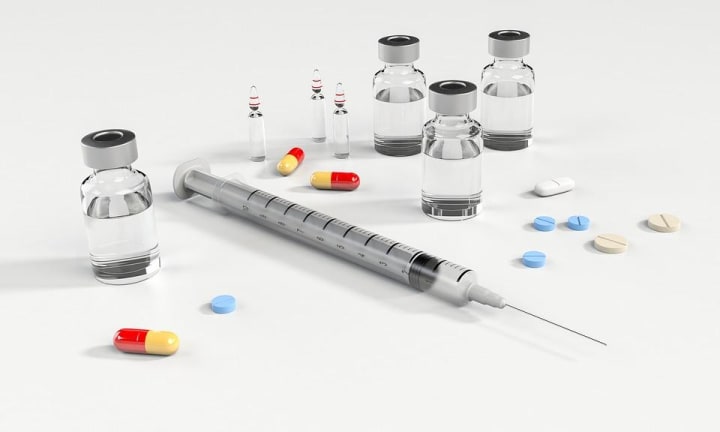How high is your blood lipid level before it's time to take medication?
There are 4 conditions that do require medication, don't take any chances

How high is LDL before I need to take medication?
This is a message from a reader friend after one of my science articles. Although we have talked a lot about medication for hyperlipidemia, there are still a lot of friends who ask similar questions, and some of them even upload their lipid test results and ask if they should take medication for this condition. What kind of lipid condition requires medication? How to choose the right medication for different conditions of elevated lipids? In today's popular article, we will talk to you about this topic.
4 kinds of abnormal blood lipid conditions need med
As most of you know, lipid tests usually include four values of total cholesterol, LDL cholesterol, HDL cholesterol, and triglycerides, and in some tests, there are more than seven values. Of these four values, LDL cholesterol is the primary lipid indicator and the primary target for assessing cardiovascular disease risk, which is the main reason why some of our readers have asked the question we mentioned at the beginning.
Regarding the question of how high the lipid level should be, we should not rely on the lipid test value alone to determine whether to use medication or not. We should combine the severity of the abnormalities of the lipid indicators with other risk factors to assess the risk of cardiovascular disease, and determine different lipid control targets with different risk levels. The question of whether or not to take medication to control lipids should be considered. For dyslipidemia that does require medication, we will briefly summarize 4 types of cases.
For those with existing cardiovascular disease, the majority of cases require medication for lipid control.
For those with existing cardiovascular disease, if we look at the risk stratification, this is a very high-risk cardiovascular condition and requires strict lipid control to reduce the risk of a second cardiovascular attack. For those with this condition, LDL cholesterol control should be below 1.8 mmol/L to be considered at the standard, and for some patients with a very high risk of a second attack, this value sometimes has to be controlled to below 1.4 mmol/L to be safer.
Controlling LDL cholesterol below 1.8 mmol/L is a very strict criterion, much lower than the upper limit of normal value (3.4 mmol/L) on the test report sheet. Therefore, in most cases, it is necessary to add medications to enhance lipid control on top of good lifestyle interventions. For example, statins can not only significantly reduce LDL cholesterol but also alleviate the process of atherosclerosis and the inflammatory response of vascular endothelium, which are long-term lipid control drugs and secondary prevention drugs for many patients with cardiovascular diseases.
2、For those who do not have cardiovascular disease, it is necessary to combine with cardiovascular risk stratification to determine whether the drug is needed
For those who do not have cardiovascular disease, the first thing you need to do is not to consider taking medication if your blood lipid level is high but to assess your risk of cardiovascular disease in combination with your blood lipid level, and other factors such as hypertension, diabetes, age, family history of early-onset cardiovascular disease, obesity, smoking, and chronic kidney disease are all factors that should be considered. For those who are at low to moderate risk, the degree of lipid elevation is usually not too serious, and they can generally consider enhancing lipid control through lifestyle modification.
For those who are at high risk of cardiovascular disease after risk assessment, it is not enough to control LDL cholesterol below 3.4 mmol/L. Only controlling this value below 2.6 mmol/L is considered to meet the standard. For those who are at high risk, it is very important to reduce the risk of cardiovascular disease from all aspects, blood pressure, and blood sugar should be well controlled, and it is better to quit smoking and control obesity.
For lipid control, if the blood lipid is not high, we can control LDL cholesterol to the standard range in daily life by actively controlling diet, maintaining a low-fat and low-sugar diet, eating more ingredients rich in dietary fiber and healthy unsaturated fatty acids, actively strengthening exercise, avoiding late nights, quitting smoking and limiting alcohol and other healthy lifestyle maintenance and improvement, which of course means no medication. It is also a safer and better way to control blood lipids than taking medication. However, for those who are at high risk of cardiovascular disease and cannot effectively reduce their risk level by adjusting their lifestyle factors, and cannot control their lipid level to the standard, they also need to add drugs to strengthen their lipid control.
3, familial hypercholesterolemia, generally need to take drugs to control
In addition to the two cases mentioned above, some friends may find that they have a light diet and pay close attention to other aspects of healthy living, but still have a heavily elevated lipid profile, with some friends even experiencing an exponential increase in LDL cholesterol, total cholesterol, and other indicators. In this case, it is time to consider the problem of hyperlipidemia due to genetic factors.
This familial hypercholesterolemia is divided into two types, pure and heterozygous. Pure heterozygotes generally have more severe elevated lipids and relatively higher risk, while heterozygotes are more common and have a greater cardiovascular risk than normal people. For this kind of high blood lipid problem, it is impossible to control the blood lipid through life conditioning alone, so it is necessary to add drugs to strictly control the blood lipid.
4、Abnormalities in other indicators of blood lipids that require medication
Besides total cholesterol and LDL cholesterol, do other lipid indexes need medication? For simple low HDL cholesterol (good cholesterol), drugs are usually not considered to regulate and control the problem, but strengthening exercise and paying attention to the reasonable intake of high-quality protein can help improve the situation. At the same time, drugs that raise HDL cholesterol can be considered.
Elevated triglycerides are noteworthy, but generally speaking, if triglyceride levels are mild to moderately elevated, they can be reduced to a normal level of less than 1.8 mmol/L by controlling diet, strengthening exercise, and controlling alcohol consumption, and this situation does not require medication. However, if triglycerides are more than 5.6 mmol/L, if they cannot be lowered through lifestyle management, and if you are at high risk of cardiovascular disease, you should add medication to further reduce the "residual risk" of cardiovascular disease based on controlling LDL cholesterol.
The choice of medication for different hyperlipidemia problems
We have introduced four types of dyslipidemia that need to be controlled by medications, and then we will briefly introduce the following issues regarding the selection of medications and precautions for lipid lowering.
Statins are the most common lipid control drugs, and they are still the basic and preferred drugs for cardiovascular disease risk control, especially for cardiovascular risk control of elevated total cholesterol and low-density lipoprotein cholesterol. For long-term use of statins, care should be taken to choose low-dose statins for lipid control based on achieving the lipid control standard as much as possible, which can better ensure the safety of the medication. The common risks of adverse reactions to statins include elevated transaminases, muscle pain, elevated blood glucose, etc. They should be monitored during long-term use, and any abnormalities found should be combined with the situation to discontinue or adjust the medication regimen promptly.
Cholesterol inhibitors, such as ezetimibe, are good partners of statin. The lipid-lowering effect of these drugs is not as strong as that of statin, but they can play a synergistic role with a statin to enhance lipid control, and for patients who cannot tolerate the adverse effects of statin and the degree of lipid elevation is not serious, they can also consider using them alone to enhance lipid control. The safety of these drugs is relatively high, and the adverse effects are mainly in the gastrointestinal tract. In combination with statins, special attention should be paid to the regular monitoring of liver function.

PCKS9 inhibitors are a new class of lipid-lowering drugs that have been newly marketed in recent years. At present, the domestically marketed ones include elotuzumab and aliskirenzumab. It is a drug for controlling lipids by subcutaneous injection, usually given once every two weeks, with a stronger lipid-lowering effect than a statin, and it can be combined with statin and ezetimibe to enhance lipid control. Most of these drugs are used in patients with statin-intolerant hyperlipidemia and the control of familial hypercholesterolemia. The main adverse effect of this drug is an adverse reaction at the injection site.
High-purity fish oil preparations. For the control of high triglycerides, if combined with elevated LDL, the effect of statin control can be considered and monitored first, but in cases where triglycerides alone are elevated and medication is required, eicosapentaenoic acid ethyl ester (IPE), a nanoformulation of the unsaturated fatty acid EPA, which has been marketed in recent years, has been shown to have a definite triglyceride-lowering effect and does not affect other lipid indicators, and has Some reduction in residual risk of cardiovascular disease. These drugs are usually safer, but one should be aware of the possibility of increased bleeding risk with high doses.
The above-mentioned types of lipid-lowering drugs are all drugs that have clear clinical lipid-lowering effects and can bring cardiovascular benefits. I hope that this article today can be helpful for you to understand the drug control of high blood lipids and strengthen the rational selection and application of drugs. We also welcome you to actively forward and share, so that more people can see such health knowledge so that we can help together and spread health science knowledge together.
About the Creator
Canal Gloff
You will be changed by what you love, sometimes to the point of losing your entire identity.
Enjoyed the story? Support the Creator.
Subscribe for free to receive all their stories in your feed. You could also pledge your support or give them a one-off tip, letting them know you appreciate their work.






Comments
There are no comments for this story
Be the first to respond and start the conversation.